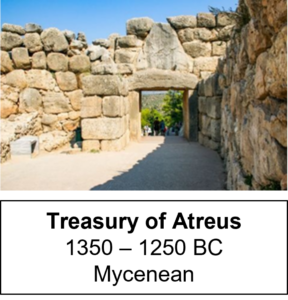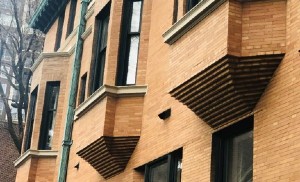
By Brian Kelly, Class of 2019
On December 14th, CAC@Home streamed Leslie Clark Lewis and Burt Michaels’ presentation “Saints and Sinners: Gold Coast Sights and Stories.” The evolution of one of Chicago’s most iconic streets, North State Parkway, was carefully revealed.
The residence located at 1525 North State Parkway inspired me and set me off on a journey. The home was built in 1897 for John Sumner Runnells and designed by Solon Spencer Beman. Runnells, born in New Hampshire in 1844, came to Chicago by way of Iowa after a long-distinguished legal and governmental career. He was appointed chief legal counsel for the Pullman Company in 1887 and succeeded Robert Todd Lincoln as its president from 1911 to 1922.
Architect Beman was born in Brooklyn, New York, in 1854 and came to Chicago in 1879 to remodel the Prairie Avenue mansion of railroad magnet George Pullman. Based on that successful project, Pullman retained Beman to design America’s first planned industrial town, Pullman, located on Chicago’s southeast side.

It was the refined brick work of the Runnells’ home that resonated with me. The north façade features three bays and fronts the Wooden Alley. The support elements of the three bays are remarkable in their efficent elegance. I wondered what was the source of Beman’s inspiration?

The next day, my journey serendipitously advanced when I read “Root and Sullivan during the 1886 – 88 slowdown” on Jerry Larson’s blog, here. The caption beneath the photo of the 1889 old San Francisco Chronicle building caught my eye.

The caption was puzzling. Cyclopian?
Cyclopian (cyclopean) is a technique of masonry featuring massive boulders without mortar. A technique Myceneans (ancient Greeks) “invented”. In Greek mythology, Cyclops were craftsmen with supernatural strength and skill who built the massive walls of Mycenea, Tiryns, and Argos. This reminded me of the megalithic masonry at the Treasury of Atreus in Mycenea, 120 miles south west of Athens.
 Within the Treasury is the doorway to the tomb of Atreus. Above the lintel, are two opposing sets of successive courses of stone which meet at a peak. Though not a true arch, they do support weight and are referred to as a corbel arch. These innovations in structural design spread via trade routes throughout the eastern Mediterranean, even to the town of Palmyra in Syria.
Within the Treasury is the doorway to the tomb of Atreus. Above the lintel, are two opposing sets of successive courses of stone which meet at a peak. Though not a true arch, they do support weight and are referred to as a corbel arch. These innovations in structural design spread via trade routes throughout the eastern Mediterranean, even to the town of Palmyra in Syria.

Meanwhile my journey sped along by something else in the caption. Bracket?
A bracket is a right-angled support attached to and projecting from a wall. The bay above the entrance of the old San Francisco Chronicle building is supported by a corbel as a bracket would be insufficient. The corbel supports the seven-story bay and transfers the considerable load to the building structure to counteract the tendency to overturn or fall outward, especially in San Francisco’s seismically active context.
Beman used corbels to support the three bays of the northern wall of the Runnells residence. Each corbel is created from successive courses of brick which are anchored into the structure.
Solon Spencer Beman derived inspiration from historic precedents to inform his elegant solutions to the structural challenges he faced in his work at both the Pullman Administration Building and the Runnells residence.

The CAC@Home program was a terrific hour of storytelling. Thanks to Leslie and Burt for setting me off on my journey!
CLICK HERE for more stories on The Bridge.


The cyclopean structures remained me of Incan construction in Peru. Check out the fortress of Saqsaywaman.
Talk about sliding into the rabbit hole! Fascinating research and reporting, Brian. Photography with labeling made all crystal clear. I love checking out the variety of brick work in Chicago….such a variety. Thank you for continually opening the « next door. »
Suzy Ruder
Another fascinating exploration, Brian. As an archaeologist, I was thrilled by mention of corbel arches, such an ancient building technique. Used in Egypt in Great Pyramid, ca 2550 BC and in Mesopotamia in tombs of Royal Cemetery at Ur from same time. Going further afield, corbel arch is also at Newgrange monument in Ireland, probably 500 years earlier. And used in Classic Mayan architecture ca 600-900 AD. All independently invented, and maybe we will discover even earlier examples!
Also interesting comment about the superlative Incan masonry (ca 1200-conquest in 1533) at places like Cuzco. Massive stone blocks, often finely dressed-Ashlar- cut with tools no sharper and bronze and meticulously fitted without mortar. Their building techniques had excellent seismic resistance, stable in moderate earthquakes.
Finally, Beman designed a building on our Evanston walking tour:
The First Church of Christ, Scientist, 1918, now the Music Center of Chicago, in a Classical Revival style.
A lot more rabbit holes to go down, but that’s the Brian effect.